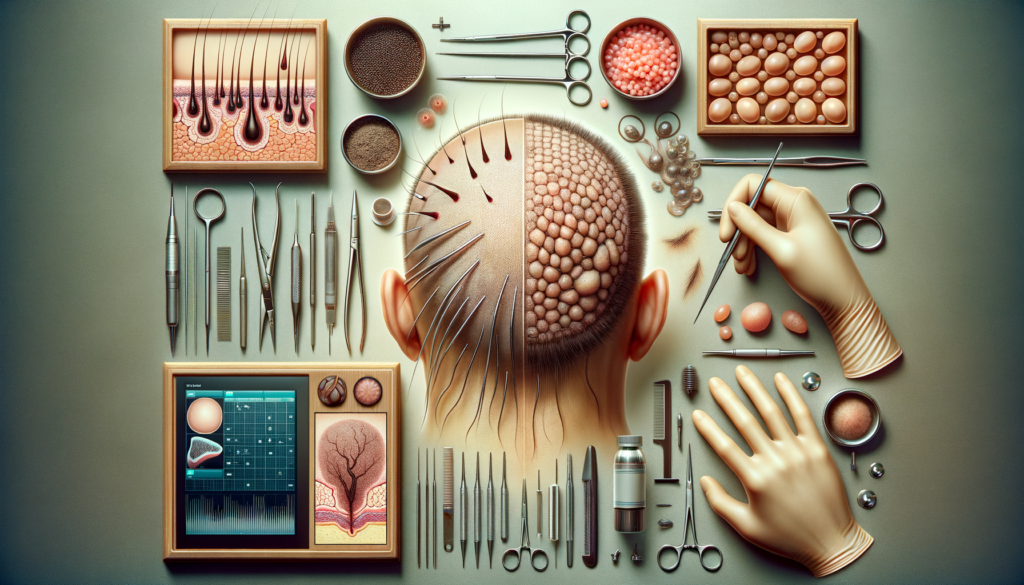The Finance Blog

Hair Transplants in Ireland: Restore Confidence with Natural Results
The Growing Demand for Hair Transplants in Ireland
In recent years, the demand for hair transplants in Ireland has seen a notable increase. This surge can be attributed to a combination of factors, including a growing awareness of available treatments and the desire for a natural-looking solution to hair loss. As individuals seek ways to boost their confidence and appearance, hair transplants offer a viable option that promises long-term results.
Hair loss affects a significant portion of the population, with studies indicating that up to 60% of men and 40% of women experience noticeable hair thinning by the age of 50. This widespread issue has led to a burgeoning market for hair restoration services. In response, clinics across Ireland have expanded their offerings, providing advanced techniques that cater to the diverse needs of clients.
Moreover, the stigma surrounding cosmetic procedures has diminished over time. People are more open to discussing their hair loss concerns and are actively seeking solutions. This shift in perception has paved the way for hair transplants to become a mainstream option for those looking to regain their youthful appearance.
Several factors contribute to the growing popularity of hair transplants in Ireland:
- Advancements in technology, leading to more effective and less invasive procedures.
- Increased accessibility with more clinics offering competitive pricing and payment plans.
- Positive testimonials and visible results from individuals who have undergone the procedure.
As the demand continues to rise, Ireland is positioning itself as a hub for hair restoration, offering world-class services that attract clients both locally and internationally.
Understanding the Hair Transplant Process
The hair transplant process is a meticulous procedure that involves transferring hair follicles from a donor site to areas of thinning or baldness. This method ensures that the transplanted hair grows naturally, blending seamlessly with the existing hair. Understanding the nuances of this process is crucial for individuals considering this option.
There are primarily two types of hair transplant techniques: Follicular Unit Transplantation (FUT) and Follicular Unit Extraction (FUE). Each method has its own set of advantages and considerations:
- Follicular Unit Transplantation (FUT): This technique involves removing a strip of skin from the donor area, usually the back of the head, and dissecting it into individual follicular units. These units are then transplanted to the recipient site. FUT is often recommended for patients requiring a large number of grafts, as it allows for the harvesting of more follicles in a single session.
- Follicular Unit Extraction (FUE): In contrast, FUE involves extracting individual hair follicles directly from the donor site using a specialized tool. This method is less invasive and results in minimal scarring, making it an attractive option for those who prefer a quicker recovery time. However, FUE may require multiple sessions to achieve the desired density.
Both techniques have been refined over the years, with advancements in technology enhancing their effectiveness and safety. The choice between FUT and FUE often depends on the patient’s specific needs, hair type, and the surgeon’s expertise.
It’s essential for individuals considering a hair transplant to consult with a qualified specialist who can provide a personalized assessment and recommend the most suitable approach. This ensures optimal results and a satisfying experience.
Post-Procedure Care and Expectations
After undergoing a hair transplant, proper post-procedure care is vital to ensure the success and longevity of the results. Patients should be prepared for a recovery period that requires diligence and patience, as the newly transplanted hair follicles need time to establish themselves.
Immediately after the procedure, patients may experience some swelling, redness, and discomfort in the treated areas. These symptoms are typically mild and subside within a few days. It’s important to follow the surgeon’s instructions closely to minimize complications and promote healing.
Key aspects of post-procedure care include:
- Avoiding strenuous activities and direct sun exposure for at least a week.
- Keeping the scalp clean and dry, with gentle washing as advised by the surgeon.
- Refraining from smoking and alcohol consumption, as these can impede the healing process.
Patients should also be aware that the transplanted hair will initially shed within the first few weeks, a normal part of the hair growth cycle known as “shock loss.” This is followed by a period of regrowth, with noticeable improvements typically seen within three to six months.
While the full results of a hair transplant can take up to a year to manifest, the outcome is often rewarding, with a natural-looking head of hair that boosts confidence and self-esteem. Regular follow-up appointments with the surgeon can help monitor progress and address any concerns that may arise.
Ultimately, understanding the expectations and committing to the recommended care regimen plays a crucial role in achieving a successful hair restoration journey.









